
From Guest Editor Sean Redmond’s Introduction
Joker arrived at a time of what has been defined as ‘unprecedented’ political, social, and economic turmoil (Kellner, 2017). President Trump’s lacerating discourse, funnelled through ugly tweets and spectacular rallies, legitimised conspiracy theories while denying the indexes of truth-telling for fakery. Alongside Trump’s fictionalisation of the real was an appeal to alienated and disenfranchised (white) men, fuelling and flaming a toxicity that sought to poison the democratic well. In cities and towns black men found themselves under greater surveillance and in increasing risk of mortal harm from the forces of law and order. Black Lives Matter and they didn’t. Walls were being built to keep immigrants out and great Americans in. Under the banner of making America great again, geopolitical Isolation and exceptionalism became the yarns of the national imaginary. Many Americans gravitated to or were seduced by this populism. In the precarious marketplace, tens of millions of people found themselves living below the poverty line, on zero hour contracts, unable to afford basic food or healthcare. Social support services had been cut and a despairing loneliness had affected all demographics, becoming the crisis of the age. And yet, of course, people had also got (super) rich, the value of the stock-market had risen, and those on the breadline also lined up to celebrate this new Trumpian nationalism. In Joker we find these realities, collisions, and intersections played out.
White Riot: a Joker Roundtable
ARTICLES
A city without a hero: Joker and rethinking hegemony
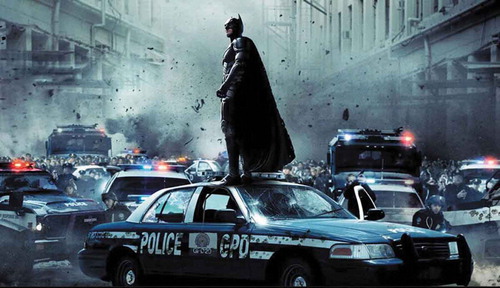
By Jeffrey Brown
Excerpt: “The mutually defining relationship between Batman and the Joker is a succinct and entertaining way to present parables about abstract cultural ideals like justice, morality, social compliance, and economic stratification. Underneath Batman’s cowl is a figure who champions law and order as a form of absolute moral justice. And beneath the Joker’s clown make-up is a symbol of chaos and destruction, an embodiment of anarchy and total disregard for social regulations. Numerous critics have focused on this dichotomy as the most crucial and effective component of the Batman/Joker dynamic.” Read the full article here
The Joker city, or the mysteries and miseries of Gotham
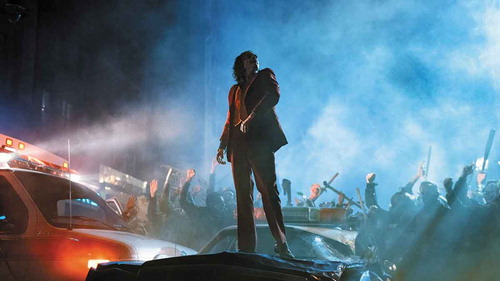
By Jesús Jiménez-Varea, Alberto Hermida, and Víctor Hernández-Santaolalla
Excerpt: “A combination of economic, political, and technological factors at the beginning of the nineteenth century provoked an unprecedented growth of some cities in different parts of the world during the following decades, thus opening the door to the new era of the megalopolis. As the industrial revolution materialized the principles of capitalism, the social hierarchy experienced an accelerated reconfiguration with the ascension of a bourgeois elite that accumulated wealth and power in the city as a result of their mercantile endeavors, gradually displacing aristocracy in some European countries. In contrast, the lower classes, whose numbers continually increased due to the migration from the rural zones to the big cities, found themselves in appalling conditions in terms of housing, nutrition, sanitation, and practically every material aspect of life, while the lack of social belonging among the urban masses only made things even worse.” Read the full article here
A tale of two masculinities: Joaquin Phoenix, Todd Phillips, and Joker’s double can(n)on
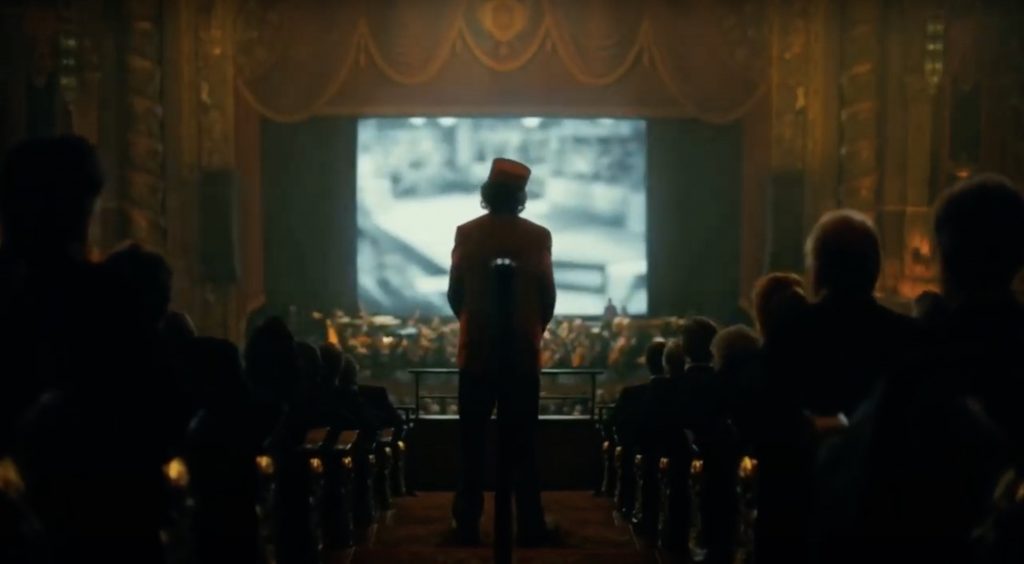
By Misha Kavka
Excerpt: “While Joker has inspired impassioned debate about whether it proffers critical insight about or a rallying cry for the white male underclass, such ambivalence is already pre-figured in the trope of Arthur as sad clown, whose sob-inflected cackle tells us he is wailing on the inside while laughing on the outside. This is, however, a specifically gendered ambivalence, unapologetically bound to a masculinity which doesn’t quite add up. Dancing on the thin edge between tragedy and comedy from the very first tear that rolls into the painted creases of Arthur’s clown smile, Joker exceeds its diegetic bounds to stage a clash not just between ‘haves’ and ‘have-nots,’ but between two kinds of masculinity: the conformist masculinity of director Todd Phillips, known for the alcohol-fuelled bonding and casual misogyny of numerous frathouse-cum-road trip films, and the deformist masculinity of star Joaquin Phoenix, whose loner roles have plumbed the depths of masculine alienation, rage, and malaise in films like The Master, Inherent Vice, You Were Never Really Here and even the cyber-romcom Her.” Read the full open access article here
Repeated failure: time, dressage and thingness in Joker (2019)

By Merlin Seller
Excerpt: “However, Arthur – down-trodden, depressed, homicidal – in drawing on alienated masculinity, invokes a history of masculinity in ‘crisis’. Indeed, some gender theorists describe modern masculinity as masochistic crisis: ‘a self-destructive identity … shrinkage of the self.’ Hegemonic masculinity, moreover, is ‘constantly’ in flux, subject to changing bases and strategies. An appreciation of this leads Grant to argue that: ‘Crises in the representation of masculinity are nothing more than especially insistent “defenses of patriarchy””. In 2019, ‘new toxic assemblages appear to complicate the orthodox alignment of power and dominance with hegemonic masculinity by operationalizing tropes of victimhood’, creating what Ging terms ‘hybrid’ masculinities. These operate in ambivalent tension with hegemonic ‘alpha male’ masculinity and can transgress normative values of athleticism and sexual prowess in attempts to defeat threats to white male privilege. As Carroll and Ging argue, narratives of white male suffering can reinforce the status of white male privilege.” Read the full article here
Cracking up: Joker and the mediatisation of the arse-end of the world
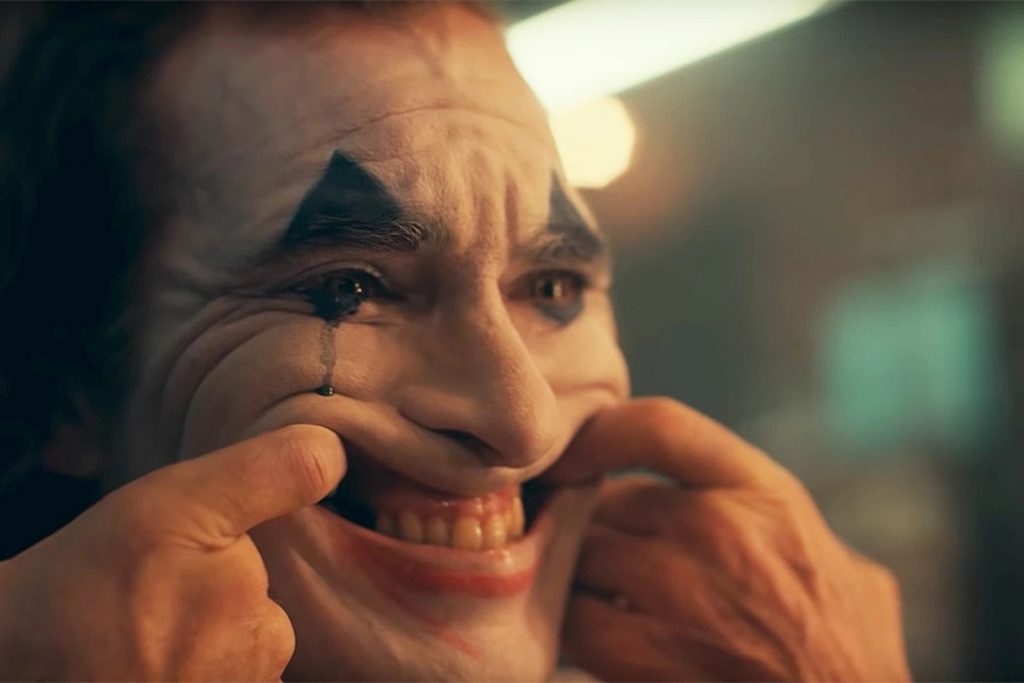
By Caroline Bainbridge
Excerpt: “Joker articulates these interwoven facets of political and ideological history through its central figure, Arthur Fleck (Joaquin Phoenix) – a middle-aged, white, male member of the forgotten underclass for whom poverty, mental ill health, unemployment, and pathological loneliness are the stuff of everyday experience. To say that the atmosphere of the film is bleak remains an understatement, as critics have noted, and reviews sketch it as both ‘essential viewing,’ and, paradoxically, ‘the greatest and most dangerous film ever made.’ The reception of Joker enacts the kind of binarism that is typical of a moment in which danger and despair feel all too real – psychoanalytically, this tendency is described as ‘splitting’ – under threat, the immature unconscious mind prefers to divide its objects into ‘good’ and ‘bad’.” Read the full article here
The loneliness of Joker
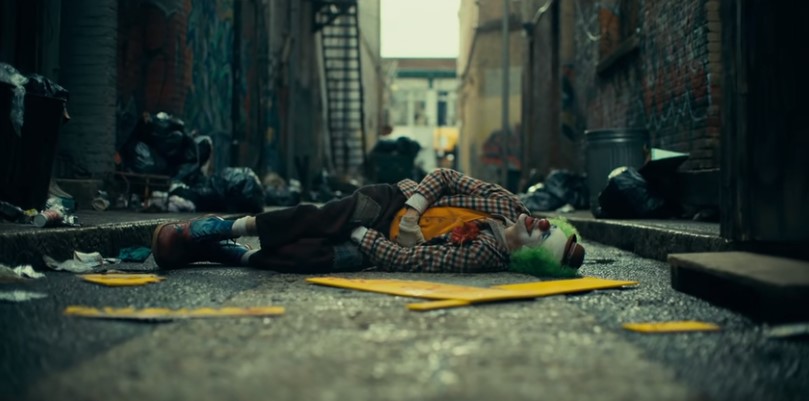
By Sean Redmond
Excerpt: “The Gotham that Arthur moves through is rendered as a set of lonely intersections marked and mapped by drudgery and decay. The desaturated palette of the film washes its buildings, roadways, transport systems, and institutions in sepia tones, dull green and grey hues, cold blues and off-whites. Waste is piled up on the sidewalks, lining each street with its degrading veneer. Signposts of termination and decline depopulate the narrative: ‘everything must go’; ‘going out of business’; graffiti sprawls its nihilist letters across almost all the film’s surfaces and places. Joker’s central locations form a connecting set of brutalist impressions: the monolithic Brooklyn Army Terminal stands in for Arkham Asylum; the deprived Anderson Avenue in the Bronx is the location for Arthur’s fortress-like apartment and the step street he climbs up and down; the Robert F. Kennedy (Triborough) Bridge that crosses the Harlem River carries the teal bus that Arthur mournfully rides home; and the abandoned Ninth Avenue Subway Station is the site where Arthur decides to murder the last of the drunken Wall Street brokers who had assaulted him on a near empty subway train.” Read the full article here
‘I didn’t know if I even really existed. But I do’: music, dance, and the performance of male identity in Joker
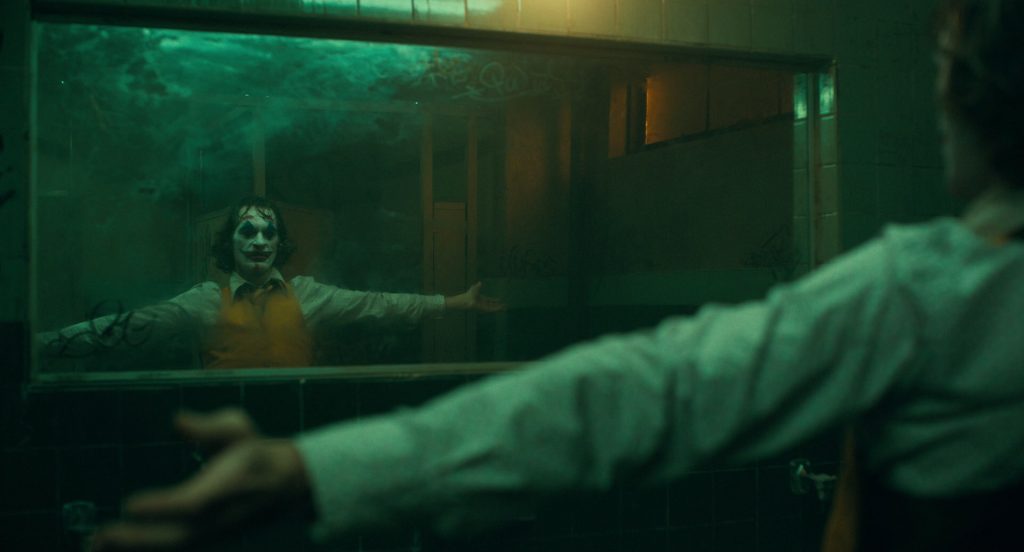
By Amanda Howell
Excerpt: “Like Bickle, Fleck tries out a series of personae over the course of the film, cobbled from elements of popular culture, especially television: beloved and dutiful son, standup comic, lover, vigilante clown, and finally, Joker, prime time assassin and emergent cult leader. And similar to Jake La Motta, it appears that even Fleck’s most violent impulses are recuperable as entertainment. But Joker – which like Fleck himself is shaped by emulation and mirroring – is most closely modelled on The King of Comedy. For Arthur Fleck, like Rupert Pupkin, reality and fantasy, public and private performances blur together in the pursuit of a new identity as a celebrity comic. Success eludes Fleck, as it does Pupkin; both settle for notoriety as a path to fame. But most importantly, we see Fleck, similar to Pupkin, work to reshape his identity within a fantasy framework informed by images and ideologies of entertainment, with an emphasis on music and dance.” Read the full article here
Hearing reality in Joker
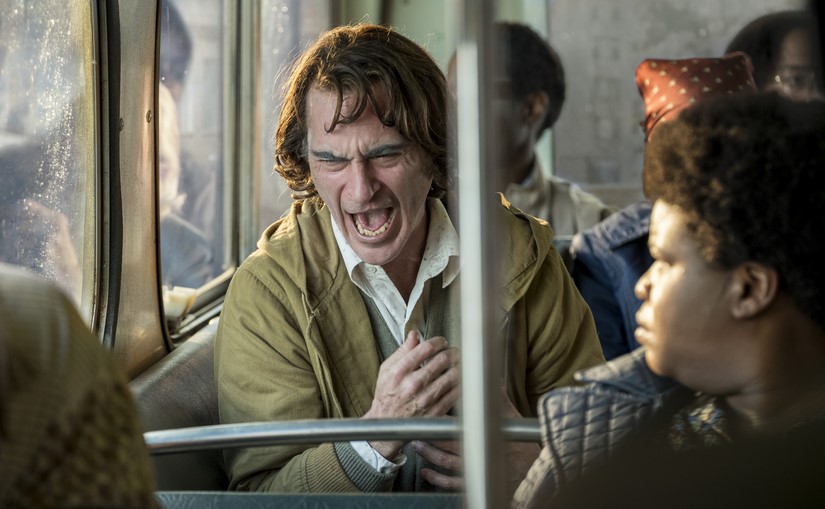
By Mark Kerins
Excerpt: “It’s a decrepit place, where virtually everything appears broken or barely functional – the elevator in Arthur’s building regularly stalls and even the lights on the subway trains sporadically flicker on and off in the tunnels. These visual elements are paralleled by a soundscape of noise and chaos. Gotham is a city packed tight with too many people and too much rage; its constant horn honks, police sirens, and angry shouting are an ever-present part of the sonic environment, enveloping Arthur and us. All these sounds, of course, are hardly foreign to any big city, or to any movie set in a city. But this Gotham does not just have a generic background ‘city’ ambience with all the incidental obnoxious noises that might include. Rather, it’s a carefully drawn, precise environment. Director Todd Phillips was very specific with the crew about how he wanted the city to sound, telling them ‘don’t make it muddy.” Read the full article here
Ace in the hole: media panics, muted voices, and anxieties of consumption in the reception of Joker
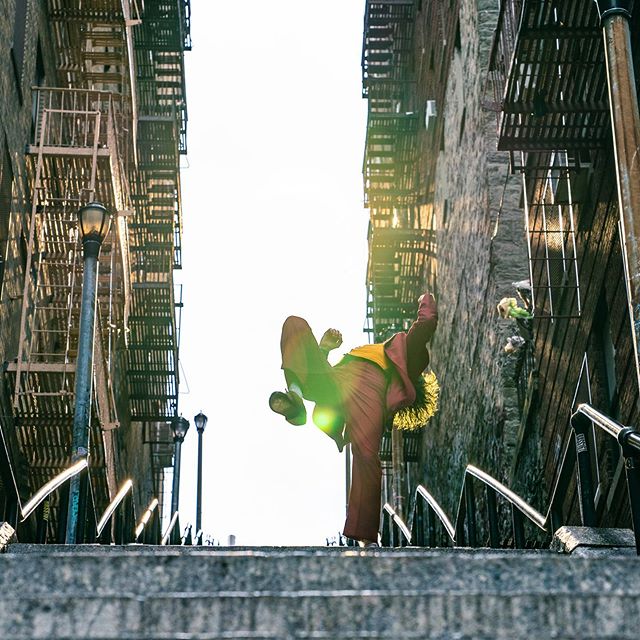
By Ernest Mathijs
Excerpt: “Ace in the Hole positions Joker as part of a media panic. And how could it not? Comic books, the Batman franchise, and jokers and clowns have traditionally led media to raise alarm over ‘villainy’ (and the Joker is one heck of a villain, in DC Universe’s ‘Year of the Villain’ that was 2019), connoted via such words as ‘freak’, ‘evil’, ‘deviancy’, and ‘harm’ as being at odds with normative culture. Amidst super-imposed references, a reference such as Ace in the Holeremains a contentious tag, a badge for the ‘knowing’ or a nudge from one viewer to another, but that recognition had to remain an almost unspoken moment in a solitary reception kept from view out of anxiety for revealing one’s instability, a bit like Taxi Driver, to drop another reference.” Read the full article here
Book Reviews
The superhero symbol: media, culture & politics
Edited by Liam Burke, Ian Gordon & Angela Ndalianis
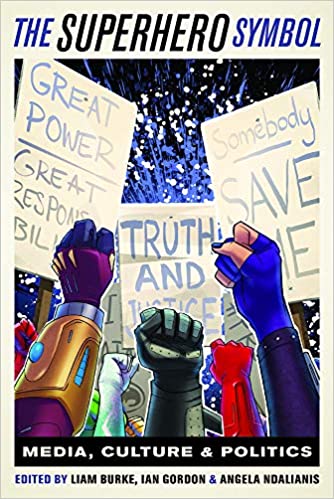
Reviewed by Vinodh Venkatesh
Excerpt: “‘Becoming the Superhero’ is perhaps the most interdisciplinary section of the anthology. Steven Conway gets things rolling with an incisive examination of agency and narratology in the Arkham series of Batman videogames. Conway homes in on the importance given to the Joker in the series, furthering that the use of the character ‘targets the jaded, postmodern videogame player, whose default hermeneutic position is skepticism’ (168). In the following chapter, Claire Langsford digs deep into the world of cosplay. Surveying a variety of social media and real-world examples, Langsford convincingly argues that cosplayers tend to gravitate towards two tropes, specifically ‘the quest for justice and the performance of epic feats’ (175), as they use the rhetorical devices extant in the genre to create community.” Read the full review here
Troubling masculinities: terror, gender, and monstrous others in American film post-9/11
By Glen Donnar
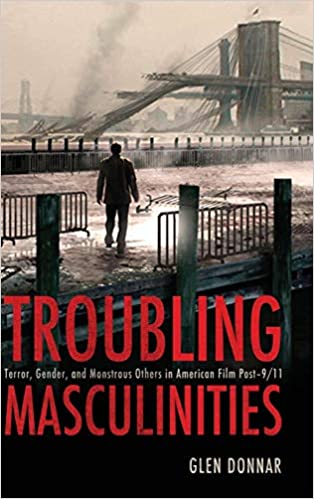
Reviewed by Paul Doro
Excerpt: “One could wonder why the book contains no mention of superhero movies that have routinely surfaced in discussions of 9/11, including The Dark Knight (Christopher Nolan, 2008) and Man of Steel (Zack Snyder, 2013). Nevertheless, Donnar’s book is a meticulous examination of masculinity in Hollywood genre films during a specific period of time and adds great value to the discourse surrounding masculinity in contemporary culture. It challenges the conventional wisdom surrounding films that have received significant scholarly contention and persuasively argues that the films are more complex than they appear. It might seem as if mainstream Hollywood films would work diligently to comfort the audience while conjuring memories of 9/11 and reassuring them that normative masculinity will save the day and restore America’s identity, but such is not the case.” Read the full review here
Mental disorders in popular film: how Hollywood uses, shames, and obscures mental diversity
By Erin Heath
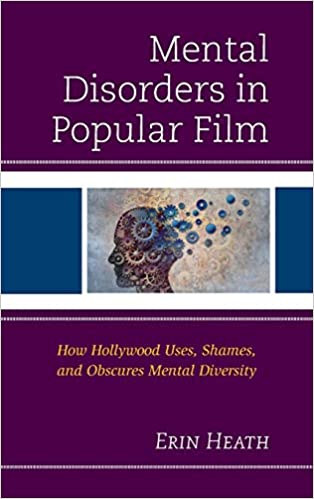
Reviewed by Fiona Gregory
Excerpt: “‘Madness’ is a common feature in cinema, with filmmakers drawn to the heightened emotion and distortions of reality that circulate around actual or alleged ‘insanity.’ Amongst the many films that exploit madness as a narrative ploy, there are a few that attempt to offer a more nuanced representation of mental illness and, as Erin Heath demonstrates in this compelling and important study, even fewer that offer real insight into the lived experience of mental illness. Using a variety of theoretical frameworks drawn from literary studies, feminist criticism, and cognitive studies, Heath shows that mainstream Hollywood cinema repeatedly positions characters with forms of mental disorder or disability as narratively expedient and rarely allows them to be engaging characters in their own right.” Read the full review here
